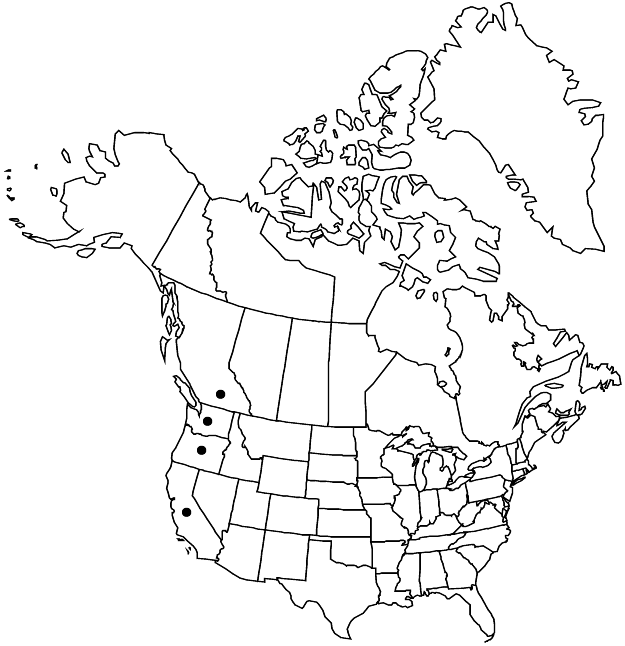Sagina decumbens subsp. occidentalis
Rhodora 80: 68. 1978.
Leaves: basal rosette absent. Sepals ovate to orbiculate, body and hyaline margins frequently purple. Seeds light-brown, seldom ridged, and then never forming reticulate pattern, smooth to slightly pebbled.
Phenology: Flowering spring–early summer.
Habitat: Dryish hillsides, margins of vernal pools, streams, open spots in redwood and pine woods, roadsides, dwellings
Elevation: 0-900 m
Distribution

B.C., Calif., Oreg., Wash., Mexico (Baja California)
Discussion
Except by geography, subsp. occidentalis is very difficult to distinguish from subsp. decumbens. In plants of subsp. occidentalis the sepals tend to be more orbiculate and the capsules, prior to dehiscence, tend to be more globose. Extremely variable, subsp. decumbens generally can be recognized on the basis of presence of tuberculate seeds (60% frequency) and 80% have a combination of tuberculate seeds and glandular-pubescent pedicels and calyx bases. But when seeds are smooth, seeing the reticulate ridge pattern requires high magnification, and while SEM readily clarifies the differences, its use is hardly practical. Subspecies decumbens has a greater tendency to possess purple sepal tips or sepal margins, and purplish coloration frequently at the nodes.
Selected References
None.
Lower Taxa
"dehiscing" is not a number.